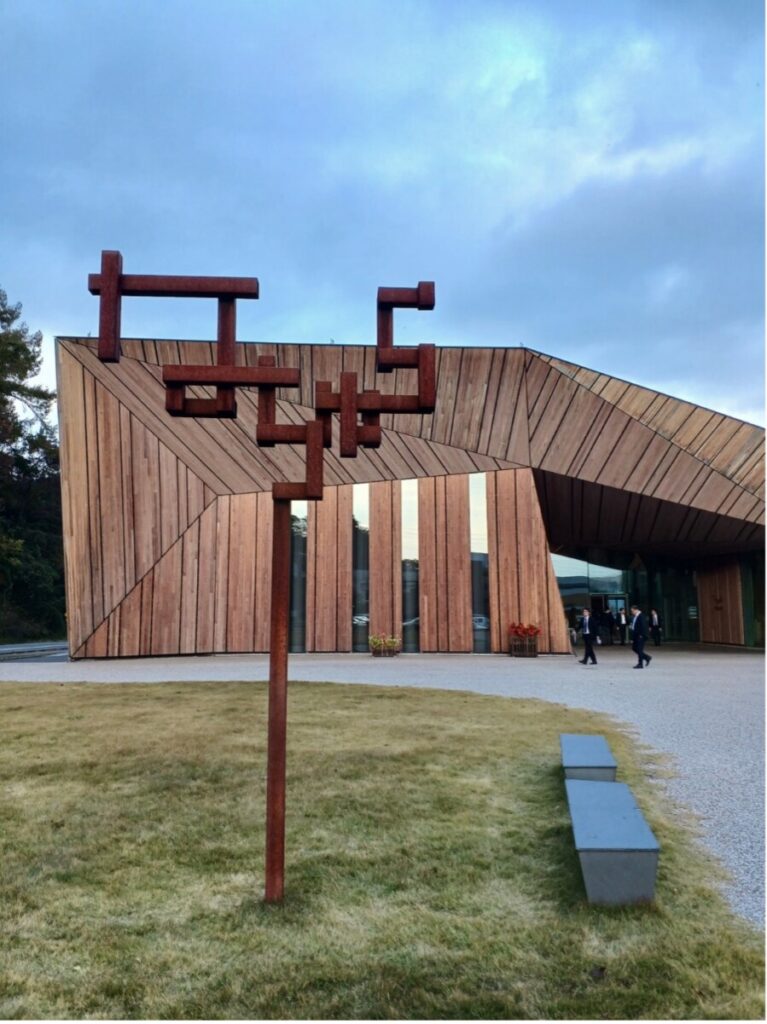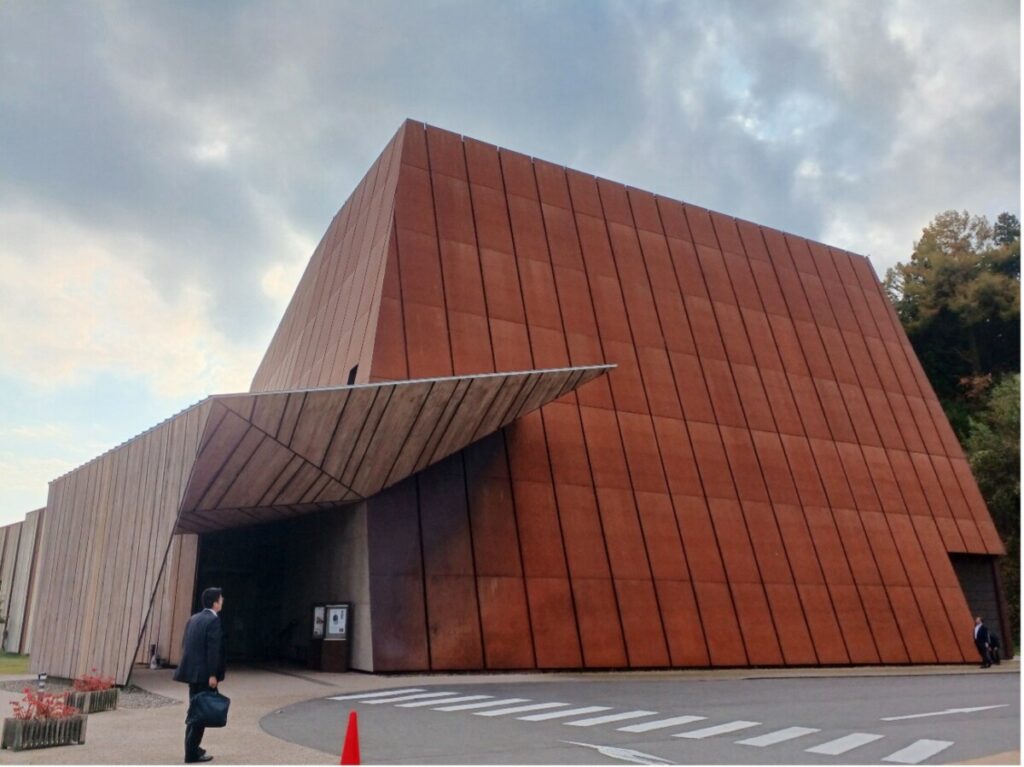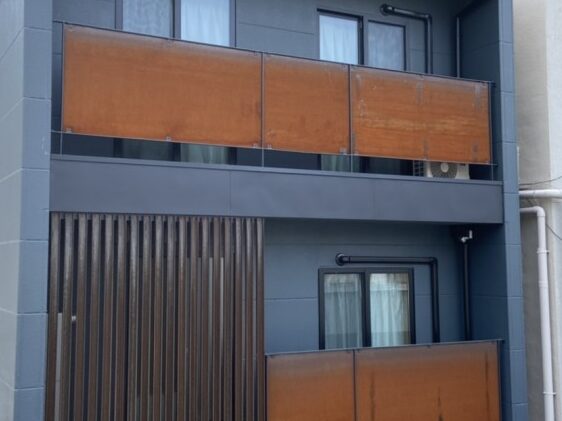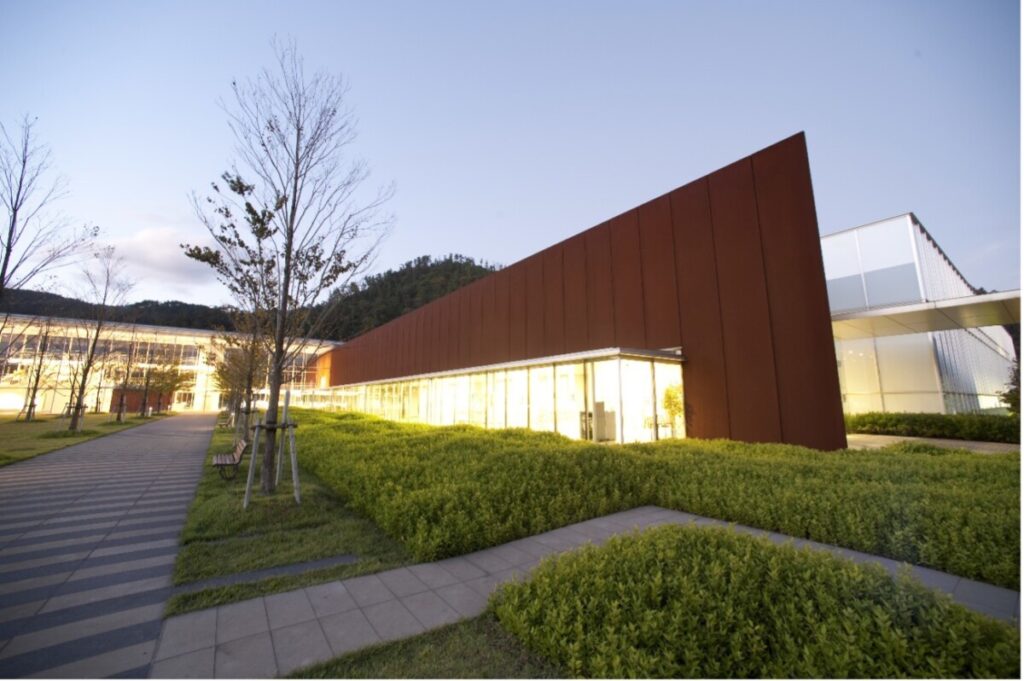“Preventing Rust with Rust?What is Weathering Steel COR-TEN®︎?”~vol.1~
- Product
- COR-TEN

※)The content of this article reflects our opinion and does not guarantee completeness or accuracy. When purchasing or processing products, please consult with specialized professionals, including our company, and verify the material based on its intended purpose and application before use.
This time, we will discuss COR-TEN®, a type of weathering steel that is relatively familiar to some people among corrosion-resistant steels.
The History of COR-TEN Weathering Steel
COR-TEN® is the name of a high-strength, corrosion-resistant steel developed by the U.S. Steel Corporation (hereafter referred to as USS). Various components were studied in the 1920s, and the product was commercialized in the 1930s. Around the same time, USS also registered the trademark in Japan.
It is believed to have originated from ‘Corrosion Resistance’ and ‘Tensile Strength.’
Along with its corrosion resistance, it also possesses high tensile strength.
It has been about 90 years since its launch. While the patent on its composition has expired, the trademark is still active.In Japan, patents expire after 20 years, but trademarks can last forever if renewed.
USS granted patent and trademark licensing in major countries worldwide. In Japan, around 1960, Fuji Steel (now Nippon Steel) became the licensee.Since then, Nippon Steel has been manufacturing and selling it domestically.
COR-TEN® has become a globally recognized brand name. Based on their website, it seems that USS is no longer manufacturing COR-TEN® itself.On the other hand, in Japan, more than 60 years have passed, but due to extensive production experience and continuous improvements, it continues to sell well even today. COR-TEN® has various applications as corrosion-resistant steel, but it is primarily used as weathering steel.
What is COR-TEN Weathering Steel?
Weathering steel is a type of steel designed to withstand various climatic conditions. It is highly effective for outdoor atmospheric use.The weakness of steel is that it rusts. This occurs because iron naturally exists in a stable oxidized form (iron ore) on Earth. Through the reduction process, it is forcibly converted into metallic iron, which then naturally attempts to revert to its original stable oxidized state. Since rusting is a weakness of iron, it is usually coated or plated to prevent corrosion.
However, weathering steel utilizes rust to its advantage. While the surface rusts, it is a special type of steel that prevents further corrosion from penetrating deeper into the material.

Weathering steel contains small amounts of alloying elements such as phosphorus (P), copper (Cu), chromium (Cr), and nickel (Ni). These additions help form a dense and adhesive rust layer on the surface, which prevents the penetration of water and air, thereby slowing down further corrosion within the material. The rust acts as a substitute for paint.
This protective, dense rust does not form overnight. It takes several years to develop as the steel repeatedly gets wet from rain and then dries.
The initial rust shows no noticeable difference compared to regular steel. Additionally, even a well-formed protective rust layer does not completely block water, so rust progression does not become zero. However, it remains at a negligible level in relation to the lifespan of the structure.
On the other hand, just as regular steel experiences severe corrosion in coastal areas, weathering steel also struggles to form a protective rust layer in high-salinity regions. As a result, the use of COR-TEN® is subject to certain limitations in such environments. This point will be discussed later.
Additionally, stainless steel is known for its resistance to rust. It contains at least 11% chromium (Cr) as an alloying element, making it a different category of corrosion-resistant steel compared to low-alloy steels like COR-TEN®.
The Color of COR-TEN® Steel Rust
In its initial stage, COR-TEN® steel develops a yellowish rust similar to regular steel. Rust can appear within a single day. Over the years, as the steel repeatedly gets wet and dries, the color gradually deepens, transitioning from brown to a rich, dark brown.
Examples of Home Use (From Our Company Blog)


In its yellow rust stage, it can sometimes appear patchy and not very aesthetically pleasing. However, over time, it gradually transitions into a more subdued, deep brown color.
In mountain areas, bridges seem to naturally blend with the contrast of green vegetation. Perhaps this is just my bias?
I have seen birds nesting only on the weathering steel bridge, while the adjacent painted steel bridge remained untouched. Perhaps birds feel more familiar with the naturally occurring rust than with artificial chemical coatings. Since weathering steel does not require painting, it can also be considered an eco-friendly material that contributes to CO2 reduction.
COR-TEN® steel is loved by many artists and architects, and it has been used to create a wide range of buildings (such as in Photo 1), monuments, and works of art. Those who have worked with COR-TEN® steel often find themselves captivated by its unique appeal.

How to Use COR-TEN® Steel (Uncoated and Surface Treatment)
As mentioned earlier, COR-TEN® steel is designed to develop a beautiful rust color over time through repeated cycles of wetting and drying. For this reason, it is common practice to remove the initial black mill scale using methods such as shot blasting.
For hot-rolled steel, pickling is another available method. Cold-rolled steel, however, does not have a mill scale, so it can be used as is. While using steel with mill scale does not pose a corrosion issue—since the mill scale only slows down rust formation—it results in uneven appearance between rusted areas and those covered by the scale. For aesthetic reasons, it is generally preferable to ensure uniform rusting across the entire surface.
On the other hand, shot-blasted surfaces rust very easily, and initial rust appears quickly when exposed to water. This early rust formation is similar to that of regular steel, often developing a yellowish, patchy appearance that may not be aesthetically pleasing. Additionally, before a protective rust layer forms, runoff rust—known as ‘staining rust’—can discolor the surrounding areas.
To address these issues, a surface treatment for weathering steel was developed, known as rust stabilization assistance treatment. While it resembles painting in that it involves a coating, the difference lies in its mechanism—whereas paint prevents rust by blocking air and water, this treatment allows a small amount of air and water to permeate through the coating, enabling very slow rust formation beneath it.
It may take decades for the coating to be fully absorbed by the rust and completely disappear. During this period, the newly formed rust and remaining coating coexist visually, sometimes appearing patchy, which can be a concern for aesthetics. While the protective rust layer functions effectively and does not pose a corrosion issue, if the uneven appearance is deemed unacceptable, a simple reapplication of the coating can be performed to restore uniformity.
How to Use COR-TEN® Steel (Painting)
COR-TEN® steel is typically used unpainted to allow the formation of a protective rust layer. However, there are cases where COR-TEN® steel is painted for specific applications.
The deterioration of a paint coating is not only caused by exposure to sunlight but also by rust forming in areas where the coating is damaged or has thinned. As the rust expands, it further accelerates the peeling of the paint, leading to larger uncoated sections that eventually require repainting.”
However, when the underlying material is COR-TEN® steel, even if rust forms in certain areas, its progression slows down, causing minimal damage to the paint coating. As a result, the rust does not spread as easily, reducing the extent of paint deterioration.
As a result, the repainting cycle is extended, reducing repainting costs and providing the benefit of lower overall expenses.
How was the explanation of weathering steel plate COR-TEN® Vol.1?
In the next volume (Vol. 2), we will delve deeper into the benefits of weathering steel, as well as explain standards, chemical composition, and key considerations for processing methods such as welding.
“Our company is…”
We are a specialized trading company based in Japan, dealing in high-tensile steel and other special steels.
Please feel free to contact us.
Feel free to email us.
↓↓↓
info@kumagai-steel.co.jp

